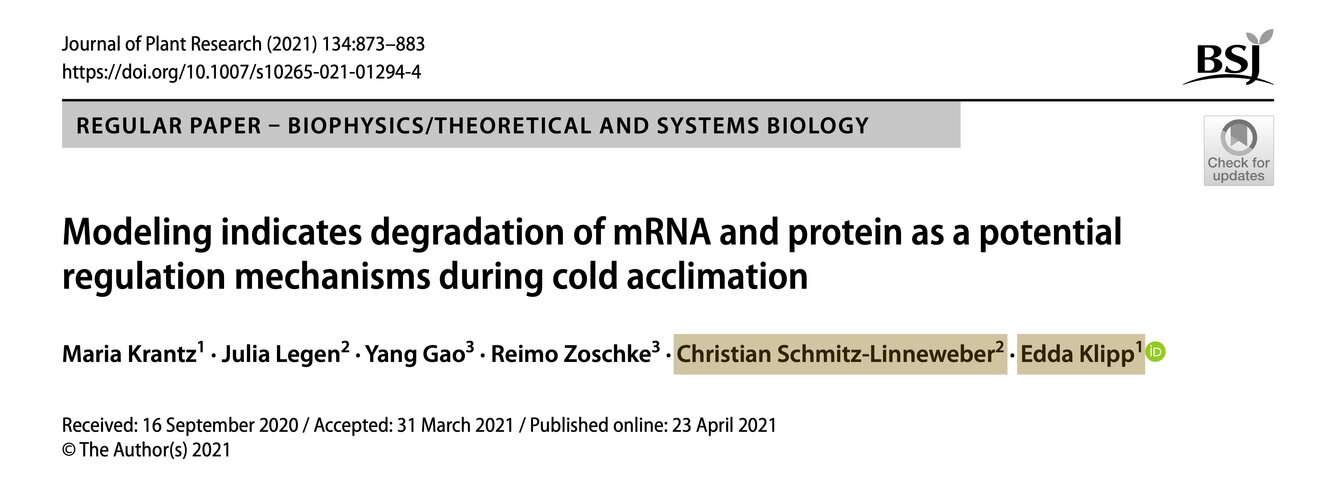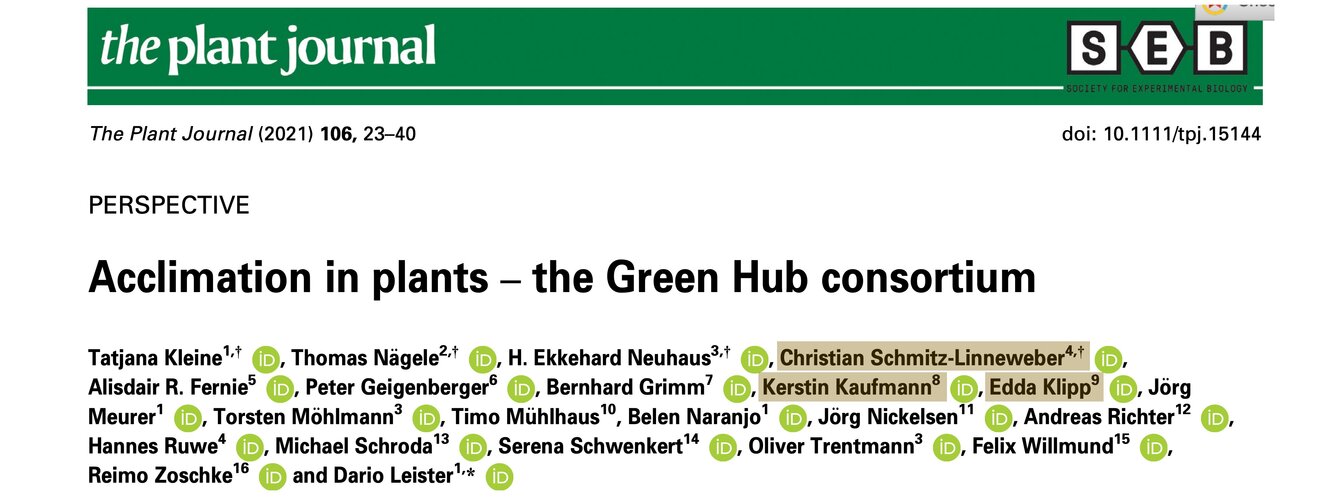Disciplinary publications from 2021
Abstract
Plants are constantly exposed to temperature fluctuations, which have direct effects on all cellular reactions because temperature influences reaction likelihood and speed. Chloroplasts are crucial to temperature acclimation responses of plants, due to their photosynthetic reactions whose products play a central role in plant metabolism. Consequently, chloroplasts serve as sensors of temperature changes and are simultaneously major targets of temperature acclimation. The core subunits of the complexes involved in the light reactions of photosynthesis are encoded in the chloroplast. As a result, it is assumed that temperature acclimation in plants requires regulatory responses in chloroplast gene expression and protein turnover. We conducted western blot experiments to assess changes in the accumulation of two photosynthetic complexes (PSII, and Cytb6f complex) and the ATP synthase in tobacco plants over two days of acclimation to low temperature. Surprisingly, the concentration of proteins within the chloroplast varied negligibly compared to controls. To explain this observation, we used a simplified Ordinary Differential Equation (ODE) model of transcription, translation, mRNA degradation and protein degradation to explain how the protein concentration can be kept constant. This model takes into account temperature effects on these processes. Through simulations of the ODE model, we show that mRNA and protein degradation are possible targets for control during temperature acclimation. Our model provides a basis for future directions in research and the analysis of future results.
Abstract
Acclimation is the capacity to adapt to environmental changes within the lifetime of an individual. This ability allows plants to cope with the continuous variation in ambient conditions to which they are exposed as sessile organisms. Because environmental changes and extremes are becoming even more pronounced due to the current period of climate change, enhancing the efficacy of plant acclimation is a promising strategy for mitigating the consequences of global warming on crop yields. At the cellular level, the chloroplast plays a central role in many acclimation responses, acting both as a sensor of environmental change and as a target of cellular acclimation responses. In this Perspective article, we outline the activities of the Green Hub consortium funded by the German Science Foundation. The main aim of this research collaboration is to understand and strategically modify the cellular networks that mediate plant acclimation to adverse environments, employing Arabidopsis, tobacco (Nicotiana tabacum) and Chlamydomonas as model organisms. These efforts will contribute to 'smart breeding' methods designed to create crop plants with improved acclimation properties. To this end, the model oilseed crop Camelina sativa is being used to test modulators of acclimation for their potential to enhance crop yield under adverse environmental conditions. Here we highlight the current state of research on the role of gene expression, metabolism and signalling in acclimation, with a focus on chloroplast-related processes. In addition, further approaches to uncovering acclimation mechanisms derived from systems and computational biology, as well as adaptive laboratory evolution with photosynthetic microbes, are highlighted.

